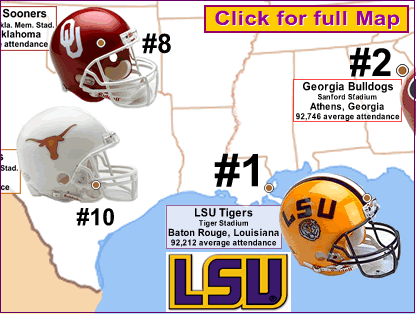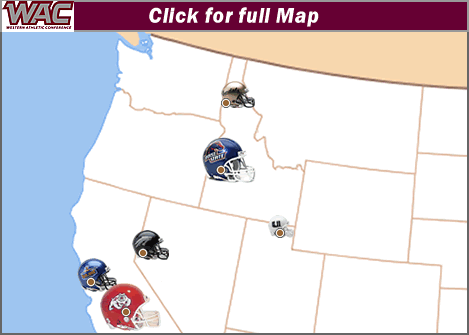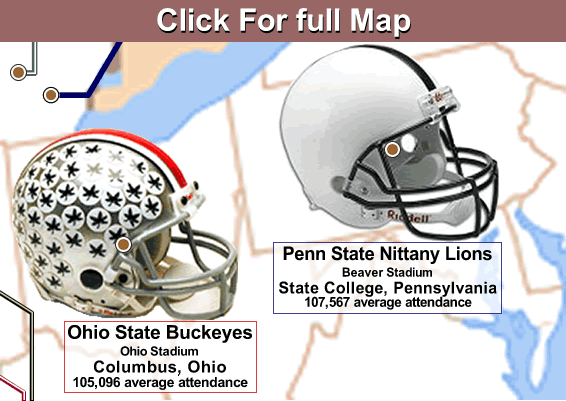
The Atlantic Coast Conference was formed in June, 1953, and begun play for football that fall. The 7 founding members had left the Sothern Conference, primarily due to that conference’s ban on post-season play. Charter members were Clemson, Duke, Maryland, North Carolina, North Carolina State, South Carolina, and Wake Forest. Virginia joined the following year. South Carolina opted to become an independent in 1971 (they are now in the SEC). Georgia Tech joined in 1978, and Florida State joined in 1991 (both from the old Metro Conference, a fore-runner of Conference USA). In 2004, Miami and Virginia Tech left the Big East, in a rather acrimonious fashion, and joined the ACC. A year later, Boston College followed suit. This made the ACC a 12-team conference. In 2005, the ACC began divisional play, with a Championship game played each December in Jacksonville, Florida. The Atlantic Division is made up of Boston College, Clemson, Florida State, Maryland, N.C. State, and Wake Forest. The Coastal Conference is comprised of Virginia Tech, Georgia Tech, Miami, Virginia, North Carolina, and Duke.
With regards to the Conference Titles chart, I did not list the 3 Dixie Conference titles that Florida State won (1948-1950), as the conference was a pretty small concern. 4 of the 9 schools in it then did not field football teams. The conference, now called the USA South Athletic Conference, is in Division 3. The list shows Duke with 16 conference titles, and that is not a typo. Duke fielded some successful football teams during it’s time in the Southern Conference (1928-1952), and were champions, or co-champions, of the first 3 ACC seasons (1953-1955). Of course now, Duke focuses it’s energies on it’s huge basketball program, to the detriment of it’s sparsely attended football program. Thanks to the Midwest Collectibles website.









